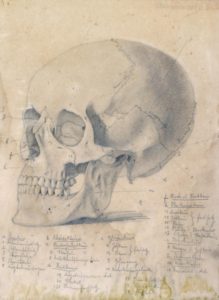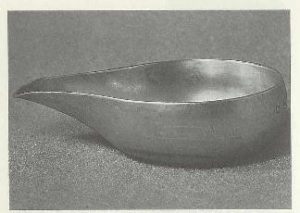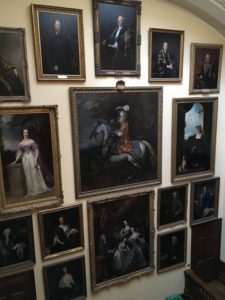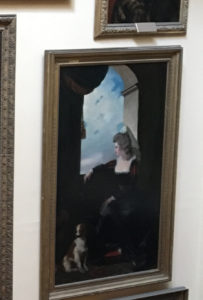When you write historicals, you often run up against a lot of misconceptions (both readers’ and your own). I’ve had the rant about “no, our characters weren’t shorter” fight more than once. So often in fact that I did a blog post about it several years back. I’ve also tried my best to demystify the history of kilts and clan tartans (to much grousing) and have tackled thorny and unpopular topics like pointing out that croquet is Victorian and the hymen is NOT located internally.
Today I want to highlight a very interesting bit of historical archology that came to my attention recently: people used to have very straight teeth! It’s almost a gimmie that when you see a historical film or show the production will highlight the snaggly teeth of the characters that happen to be poor. But it turns out that’s anachronistic!
Janet Monge—curator of the physical anthropology section at the University of Pennsylvania Museum of Archaeology and Anthropology—has studied a lot of skulls and she noticed something very interesting about them. To quote, “Nobody in the past had dental problems, like we are talking nobody.”
So what exactly got us to the point where we are now, where nearly everyone with a perfect smile had to invest a fortune in orthodontia to achieve it? Well, Monge has a theory… and it links like so many other negative physical developments to the industrial revolution. She says the change happened fast and it happened globally (the globally is a fly in the ointment in my opinion, as the industrial revolution didn’t hit across the globe all the same time), but her theory is still interesting. Her hypothesis is that it’s all down to bottle feeding! There’s a very verifiable difference between the development of the jaw an palate in babies that are breastfed and those that are bottle fed (bottles not requiring the same kind of sucking that breasts to in order to receive nourishment). So narrow faces with weaker jaws (but the same number of teeth) result in crowded and crooked smiles.
So, our characters would very likely have had beautiful, straight smiles, unless they were so unlucky as to have been “brought up by hand” and nursed on pap from a “bubby pot,’ “pap boat,” or “sucking bottle.” The snaggly teeth we all think of as a common thing pre-braces have really only been common for the past 150-200 years!











